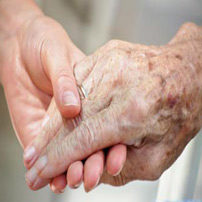Live 24/7 Call Answering: 609-881-1400

A bruise on an elderly person can be the first sign of a physical injury. Though older people bruise more easily than younger people, no bruise should be considered minor, and all bruises should be investigated. Medications, along with thinner skin and weak blood vessels in the elderly, often result in frequent bruising, but a bruise is always a sign of an injury to the soft tissue under the skin.
Bruises to the extremities are most common and can result from falls, from bumping into furniture, or from transferring from the bed or chair. The location of these types of bruises is usually on the lower extremities, however the cause of the bruises should never be assumed. Nurses, medical assistants, staff, and loved ones of the nursing home resident need to insist that the injury be documented, investigated, and reported.
Bruises on the face, neck, head, ears, upper arms, thighs, abdomen, genital area, or on the buttock of a patient should be considered suspicious. Bruising of this nature often results from slapping, hitting, punching or other abuse. They can also occur from aggressive handling, lack of supervision that result in falls from wheelchairs or beds, mistreatment when bathing or dressing a patient, and even sexual abuse. Doctors, nurses, and medical staff need to report these bruises to the nursing home administration and insist on a full investigation.
Family members, relatives, and friends need to be vigilant in assessing the patient for signs of bruising or injury. Suspicions should be reported immediately to the nurses and doctors in charge of the patient’s care, and then to the nursing home administration. Pictures of the bruising and other suspicious injuries are helpful when trying to prove that abuse has taken place.
Medical conditions, dementia, and Alzheimer’s disease can make it difficult for nursing home residents to communicate or remember the circumstances surrounding their injury, but there are several other indicators that can help determine if abuse has occurred. Patients that show fear when certain nurses or staff members appear can indicate that the individual may be mistreating them. Patients that suddenly stop talking, or refuse to leave their room may be showing emotional signs of abuse. Refusal to eat or drink, weight loss, dehydration, and bedsores can also indicate neglect.
Broken bones, sprained joints, or burns are serious injuries. The bones of elderly patients are often thin and brittle, but when fractures occur that cannot be explained by a fall, abuse should be suspected. A sexually transmitted disease or an injury to the genital area can be clear indicators of sexual abuse. Patients may be unable to self-report due to a medical condition, such as dementia, or may deny allegations for fear of retaliation from the abuser, so a thorough investigation should happen immediately.
When nursing home abuse is suspected, the patient’s safety should be the top priority. Injuries need to be evaluated by a qualified doctor, nurse, or emergency technician. Local law enforcement or 911 emergency services should be contacted when injuries are severe, or if the doctors, nurses, or staff are not taking reports of abuse seriously. Contacting an experienced nursing home lawyer can ensure that the patient’s legal rights are protected and that a proper investigation is done and follow up visits take place.